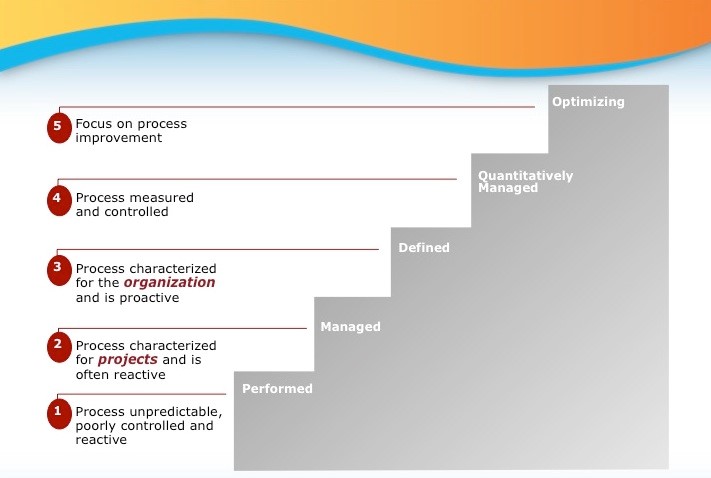The Capability Maturity Model Integration (CMMI) is a capability maturity model developed by the Software Engineering Institute, part of Carnegie Mellon University in Pittsburgh, USA. The CMMI principal is that “the quality of a system or product is highly influenced by the process used to develop and maintain it.” CMMI can be used to guide process improvement across a project, a division, or an entire organization.
CMMI provides:
The Capability Maturity Model Integration, or CMMI, is a process model that provides a precise definition of what an organization should do to promote behaviors that lead to improved performance. With five “Maturity Levels” or three “Capability Levels,” the CMMI defines the essential elements that are required to build great products, or deliver excellent services, and wraps them all up in a comprehensive model.
The CMMI helps us understand the answer to the question “how do we know?”
The CMMI also helps us identify and achieve measurable business goals, build better products, keep customers happier, and ensure that we are working as efficiently as possible.
CMMI is comprised of a set of “Process Areas.” Each Process Area is intended be adapted to the culture and behaviors of your organization. The CMMI is not a process, it is a book of “what’s,” not a book of “hows,” and does not define how your company should behave. More accurately, it describes what behaviors need to be established. In this way, CMMI is a “behavioral model” and well as a “process model.”
Organizations can be “Rated” at a Capability or Maturity Level based on over 300 discreet “Specific” and “Generic” Practices. Intended to be broadly interpreted, the CMMI is not a “Standard” (ala ISO), so achieving a “Level” of CMMI is not a certification, but a “rating.”
The CMMI was developed at the Software Engineering Institute at Carnegie Mellon University with representation from defense, industry, government, and academia, and is now operated and maintained by the CMMI Institute, an operating unit of CMU. It is the successor of the popular Software CMM or SW-CMM. The are multiple “flavors” of the CMMI, called “Constellations,” that include CMMI for Development (CMMI-DEV), CMMI for Services (CMMI-SVC), and CMMI for Acquisition (CMMI-ACQ). The three Constellations share a core set of sixteen Process Areas. There is also a “People Capability Maturity Model” or PCMM, that exists outside of the three CMMI Constellations.

There are five Maturity Levels in the CMMI